1. All-Black Everything
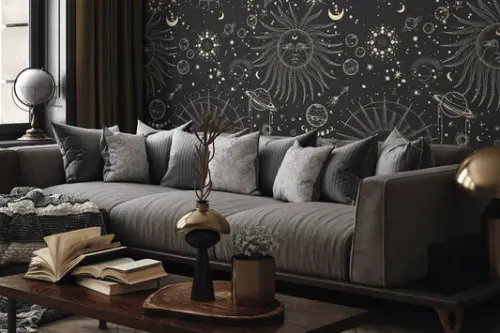
Painting your entire interior black isn’t edgy—it’s a cry for help in matte finish. Black walls, black furniture, black curtains—it goes from moody chic to “I am the void” real fast. This look is often defended as minimalist, but there’s minimal joy in a space that feels like a sensory deprivation tank. It absorbs light, shrinks space, and can actually mess with your circadian rhythm.
People often lean into black when they feel like everything else is out of control—choosing a single dominating shade is a form of self-soothing through simplicity. But design is a mirror, and sometimes that mirror is very, very dark. What was supposed to be “sophisticated” starts feeling more like a villain’s lair. If your home looks like it’s been edited by Tim Burton, maybe check in with yourself.
2. Framed Inspirational Quotes in Every Room
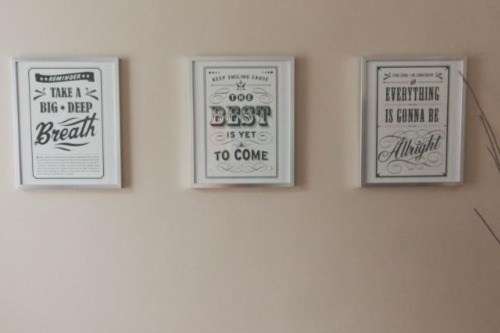
“Live, Laugh, Love” has left the chat—and been replaced with dozens of Etsy-style prints that scream “I’m trying to believe this.” One quote can be uplifting, but when every room tells you to “breathe” or “shine bright like a diamond,” it starts feeling like forced optimism. It’s often a sign someone is working really hard to keep it together. Constant reminders to “be present” are often used when your brain is absolutely not.
Interior designers caution against over-using typography art, not because it’s inherently bad, but because it can quickly feel inauthentic. A well-placed quote should feel personal, not like a desperate mantra. When your kitchen tells you to “whisk it real good,” your bathroom tells you “you are enough,” and your hallway says “just keep going”—you might want to pause and ask: Why do I need constant encouragement to exist in my own house? Maybe what you need isn’t another print, but a nap.
3. Hyper-Themed Rooms That Feel Like Movie Sets

A pirate-themed bathroom. A 1950s diner kitchen. A medieval banquet hall dining room—complete with swords. These rooms are fun for five minutes and confusing forever.
Overly themed spaces can be a way to escape real life—literally creating alternate realities. It’s not inherently bad, but when every room feels like it belongs in a different universe, it might be a sign someone’s struggling to feel grounded. Psychologists note that themed décor can signal nostalgia or a longing for control. But when your home feels more like a Renaissance fair than a functional living space, you might want to ask: What exactly am I trying to escape from?
4. Overgrown Indoor Jungles That Border on Uninhabitable
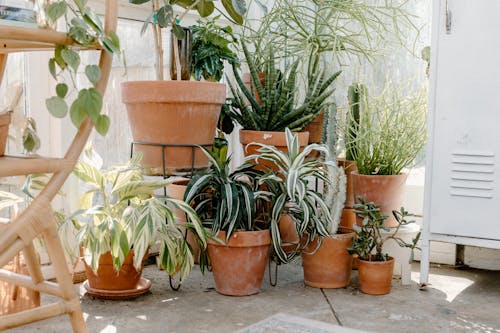
Houseplants are good for mental health—until you’ve got 80 of them and can’t find your couch. A little greenery is soothing, but when your living room looks like the Amazon and smells like wet dirt, something’s off. Some people collect plants compulsively as a distraction, filling space instead of dealing with emotional emptiness. Botanists even warn that too many plants in unventilated areas can cause mold or pest issues.
This choice often starts with good intentions—caring for plants can be therapeutic. But it can spiral into a situation where the house feels more like a greenhouse than a home. If your snake plant has a better living situation than you do, it might be time to reassess. Remember: a jungle is not a vibe, it’s a climate zone.
5. Chaotic Maximalism with No Sense of Editing
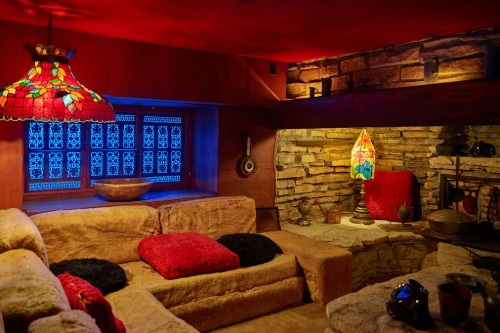
Maximalism is about self-expression, but there’s a difference between curated chaos and actual chaos. When every surface is crammed with tchotchkes, thrift finds, mismatched art, and “statement” everything, it can feel less like joy and more like mental clutter. It’s like the design version of screaming into the void—with glitter. Decorators often note that too much visual noise leads to real stress and decision fatigue.
This approach can reflect a fear of letting go—of items, of identities, of past selves. People sometimes hoard aesthetics the same way they hoard objects, unsure of what truly reflects them anymore. When you can’t sit down without moving something, it’s not a home—it’s a museum of your unresolved feelings. And spoiler: nobody wants to live in a museum.
6. Statement Furniture That’s Completely Impractical
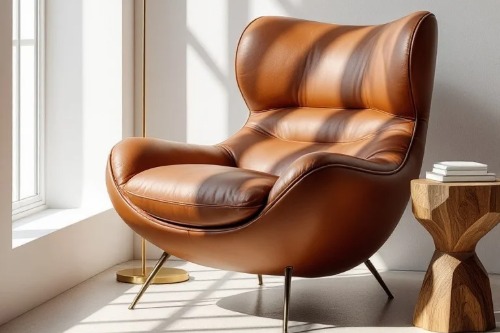
A transparent hanging bubble chair. A neon orange couch shaped like lips. A glass dining table with no chairs because “we don’t really eat here.” These items scream style, but whisper “I’ve made a series of increasingly bizarre choices.”
When form completely overtakes function, it’s often an effort to impress or distract. Furniture should serve you, not perform for your guests. Experts say impractical design choices often reflect a desire to control perception—especially when someone feels out of control inside. If your furniture looks cool but your back hurts every time you sit down, it’s not aesthetic—it’s denial.
7. No Seating Except Beanbags and Floor Cushions
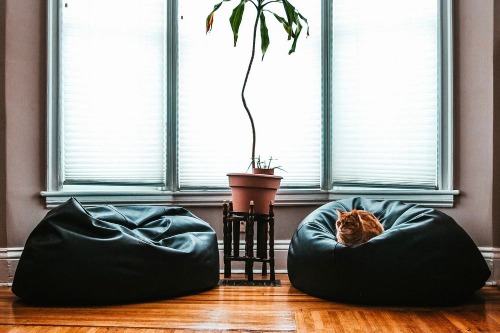
There’s low-key bohemian, and then there’s “I gave up on adult furniture.” While floor seating can be intentional in some cultures, here it’s often just a result of indecision, avoidance, or burnout. Interior designers call this the “post-college slump” vibe—especially when paired with a futon mattress on the floor and a leaning mirror. It’s less of a style and more of a surrender.
People who feel unanchored sometimes avoid committing to permanent furniture. The logic goes: if I don’t put down roots, I can’t be stuck. But at some point, your body—and your guests—will resent your aesthetic commitment to discomfort. If your home feels like a dorm but you pay property taxes, it might be time to level up.
8. Obsessively Color-Coded Everything
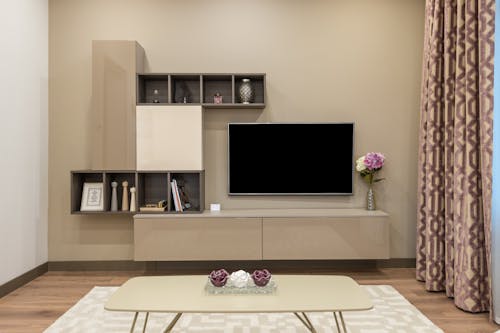
When every item in your home matches a single Pantone palette—down to your dish soap and tissue boxes—it stops being cute and starts being a cry for predictability. This goes beyond style into the realm of micromanagement. Home organizers warn that obsessive color coding can be a coping mechanism for anxiety. It’s about creating artificial control in a world that feels uncontrollable.
It’s one thing to have a cohesive color story; it’s another when your closet looks like a rainbow spreadsheet. This often signals a deeper discomfort with disorder or change. In short, if your towels are sorted by hue and your bookshelf looks like an Instagram flat lay, ask yourself: What am I afraid will happen if things get messy? Hint: probably nothing.
9. Empty Rooms “Waiting for a Purpose”
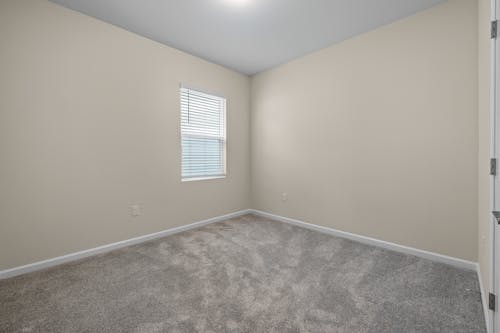
A guest room with no bed. A dining room with no table. A home office with only a single chair and a vague promise of productivity. These blank spaces are often presented as “flexible,” but they’re really just existential placeholders.
Design experts say empty rooms are surprisingly common in homes owned by people struggling with big life transitions—divorce, job loss, identity shifts. The room is left blank because choosing feels overwhelming or premature. But every time you walk by, it’s a visual reminder of indecision and uncertainty. If you’ve had an empty room for more than a year, it’s no longer a blank canvas—it’s a ghost.
This post 9 Design Choices That Reveal a Homeowner’s Existential Crisis was first published on Greenhouse Black.
